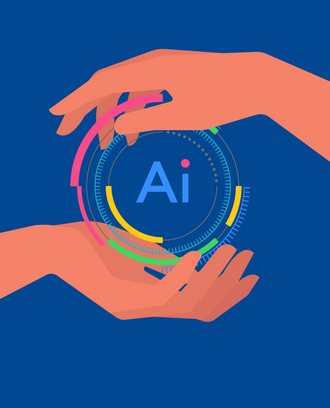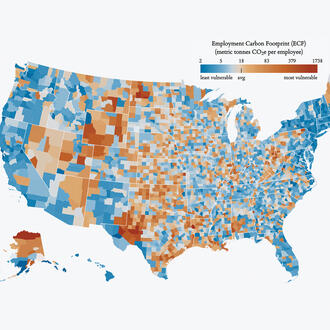Credit: Mimi Phan / Shutterstock
The official U.S. unemployment rate this February was 3.5%. Two months later, as COVID-19 throttled the global economy, it jumped to 14.7%. State agencies were unequipped to handle the flood of claims. Their phone lines were busy, their websites unresponsive. People with no income were forced to wait for a lifeline.
A new working paper by a visiting professor at MIT Sloan, presents a compelling picture of how the gig economy may alleviate situations like this, dampening demand for unemployment insurance while reducing both credit card debt and delinquency rates. Major gig economy platforms are used by people to earn income by renting out a room (Airbnb), delivering groceries (Instacart), or providing professional freelance services (Upwork).
“In some sense, the gig economy can provide that same safety net that you would normally get from unemployment insurance or credit cards: that ability to spend a little more this month until your job gets back to normal,” Nickerson said. “And it facilitates this in a way that doesn’t have some of the negative side effects we know about with unemployment or debt.”
With three coauthors, Vyacheslav Fos from Boston College, Ankit Kalda from Indiana University, and Naser Hamdi from Equifax, Nickerson looked at the rollout of Uber in roughly 160 regions between June 2012 and February 2016. The researchers matched this against individual data on unemployment before and after the company's arrival and found that people who can work for Uber — namely, those with a car — are less likely to rely on unemployment insurance and credit debt once Uber is in town.
Specifically, unemployment claims among people with a car are nearly 5% lower when compared to people who don’t have a car. Credit delinquencies are almost 3% lower.
It is possible, of course, that when Uber comes into an area it offers jobs as any other company would — that it is indistinguishable from a Walmart or Starbucks. If that were the case, Nickerson says, Uber (and the gig economy writ large) wouldn’t be anything new. To determine whether this is the case, or if, instead, Uber offers a particular kind of bridge between more permanent jobs, he looked at a subset of people for whom Uber would not suffice as a replacement for lost employment: those whose average household income was more than $90,000. Among this group, the effects still held, suggesting the gig economy does indeed function as a temporary crutch.
The researchers also wanted to understand the validity of the safety net analogy when thinking about gig work. “What do you expect of a safety net? If you lose your job, it catches you,” Nickerson said. To study this dimension, the researchers looked at cities with struggling economies; they found that in these places that the effect was amplified. “This finding was great for us because it showed this isn’t something that’s only valuable in good times, but also in bad times, which is what you want when you’re talking about a safety net,” he said.
When Uber enters a region, unemployment claims by people who own a car are nearly 5% lower than people who do not.
David Autor, a professor of economics at MIT and an expert on technology’s effect on labor markets, hesitated to describe Uber, or any gig work, as a safety net. In today’s downturn, for example, “Uber and Lyft have contracted much more than other sectors; there is much less work to be done,” he said. “If it’s an actual safety net it needs to be available all the time.”
That concern aside, though, he said the findings are an important reminder of the frequently overlooked benefits that companies like Uber and Lyft provide. “The fact that you can show up and get paid, that anyone who wants to work has the unlimited ability to do so — at least during normal times — it’s really hard to create jobs like that,” he said. “It’s great that this option is available.”
For Nickerson, two key implications flow from this research. First, he wonders how the gig economy, over time, might shape the search for meaningful work. Nickerson happens to love his job, but he knows he is an outlier. Under the pressures of financial necessity, the vast majority of people take whatever work they can get.
“But what if the introduction of the gig economy buys me a little bit of time?” he asked. People don’t need to commit to a job they don’t want, but nor must they depend on unemployment insurance or debt. “I can always keep driving for Uber until I find something I really enjoy, and so it increases the quality of that match between me and my next job. I’m not so desperate to take whatever comes my way,” he said.
Second, the findings have clear and present implications for regulation of the gig economy, a growing issue exemplified by legislation in California. There, the state legislature recently passed Assembly Bill 5, which demands that Uber and Lyft treat all of their drivers as full-time employees rather than independent contractors. The law is rooted in concern that workers are not treated well enough; and both Nickerson and Autor agree that AB5 approaches a complex problem too bluntly and myopically.
“AB5 is a step way too far and likely to be a disaster,” Autor said. “It looks like Uber and Lyft will pull out of California before they make their workers employees.”
Though the legislation may address legitimate concerns about the instability and exploitation present in contract work, Nickerson is worried it does so at the expense of important benefits. “I’m not trying to say the gig economy is perfect,” he said. “The point I am trying to make is that the narrative until now has been about how companies like Uber and Lyft simply exploit their workers and this is unfair and needs to stop. But there hasn’t been any discussion about the potential positives, and we need to understand both, the positives and the negatives, to make informed policy.”



